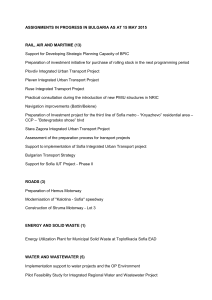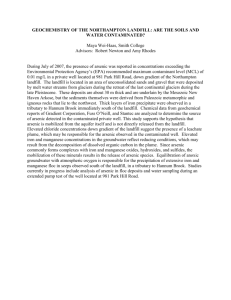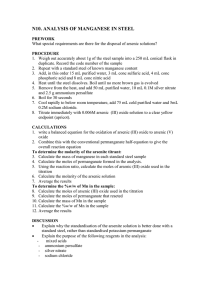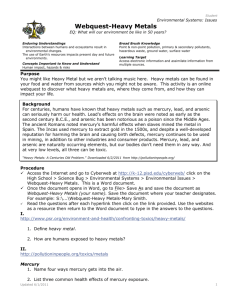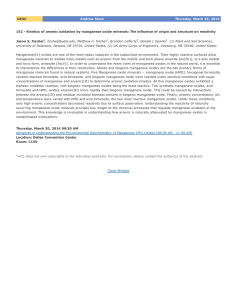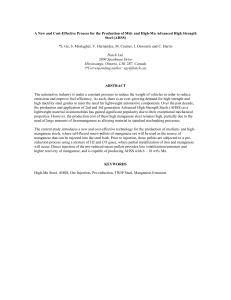BIOREMEDIATION OF WATERS POLLUTED WITH HEAVY METALS
advertisement
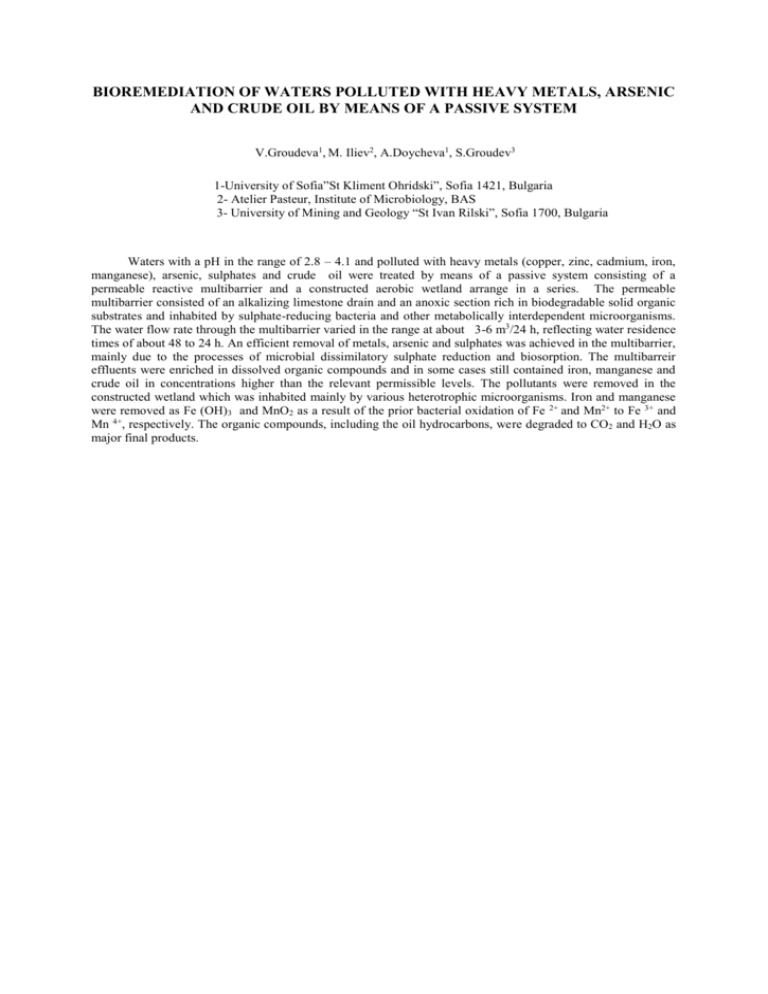
BIOREMEDIATION OF WATERS POLLUTED WITH HEAVY METALS, ARSENIC AND CRUDE OIL BY MEANS OF A PASSIVE SYSTEM V.Groudeva1, M. Iliev2, A.Doycheva1, S.Groudev3 1-University of Sofia”St Kliment Ohridski”, Sofia 1421, Bulgaria 2- Atelier Pasteur, Institute of Microbiology, BAS 3- University of Mining and Geology “St Ivan Rilski”, Sofia 1700, Bulgaria Waters with a pH in the range of 2.8 – 4.1 and polluted with heavy metals (copper, zinc, cadmium, iron, manganese), arsenic, sulphates and crude oil were treated by means of a passive system consisting of a permeable reactive multibarrier and a constructed aerobic wetland arrange in a series. The permeable multibarrier consisted of an alkalizing limestone drain and an anoxic section rich in biodegradable solid organic substrates and inhabited by sulphate-reducing bacteria and other metabolically interdependent microorganisms. The water flow rate through the multibarrier varied in the range at about 3-6 m3/24 h, reflecting water residence times of about 48 to 24 h. An efficient removal of metals, arsenic and sulphates was achieved in the multibarrier, mainly due to the processes of microbial dissimilatory sulphate reduction and biosorption. The multibarreir effluents were enriched in dissolved organic compounds and in some cases still contained iron, manganese and crude oil in concentrations higher than the relevant permissible levels. The pollutants were removed in the constructed wetland which was inhabited mainly by various heterotrophic microorganisms. Iron and manganese were removed as Fe (OH)3 and MnO2 as a result of the prior bacterial oxidation of Fe 2+ and Mn2+ to Fe 3+ and Mn 4+, respectively. The organic compounds, including the oil hydrocarbons, were degraded to CO2 and H2O as major final products.
